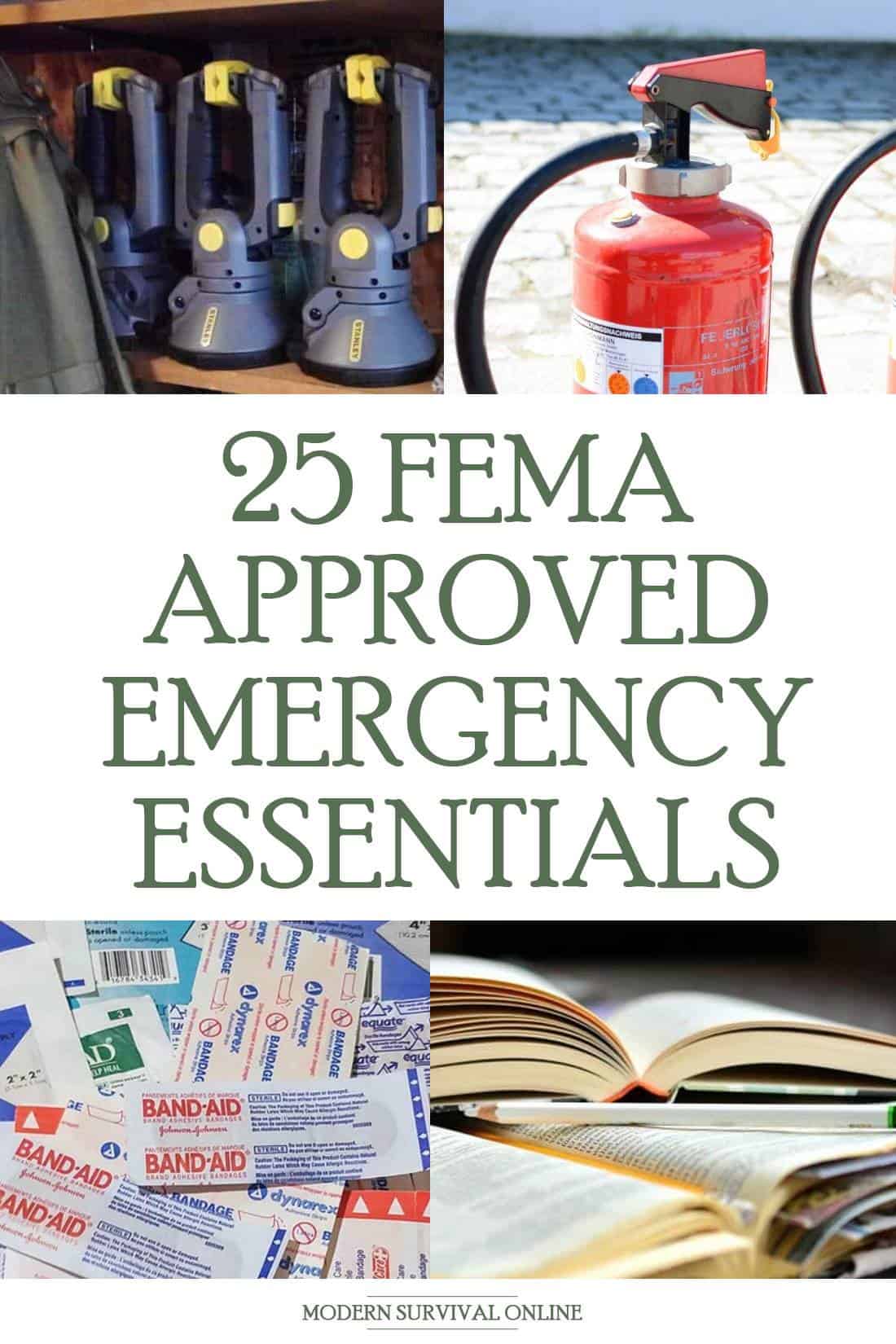For preppers who are just taking their first, tender steps into the lifestyle change that is serious personal preparedness, it is easy to run into information overload. Where should you start? How do you begin? What is most important when it comes to material acquisition?
The internet, boundless mine of knowledge that it is, is simultaneously helpful and befuddling. With one click of the mouse, you can find hundreds upon hundreds, even thousands of opinions on the matter, each of them claiming expert knowledge.
However, if there is one organization that John and Jane Doe can turn to for clear-cut, easy to understand advice concerning disaster preparedness, it is FEMA.
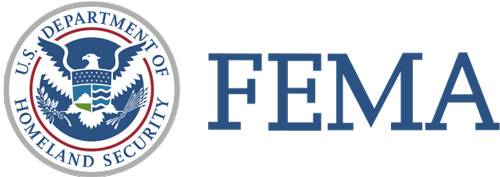
The Federal Emergency Management Agency is one of the largest and best funded agencies of its type, and even though they (like everyone else) have dropped the ball in the past, they have still done the vast majority of the groundwork for us when it comes to our shopping list, and there is no reason we shouldn’t use it.
Accordingly, we have brought to you in this article a list of 25 emergency preparedness essentials recommended by FEMA, derived from an incredible amount of research and inquiry into the subject.
For newbie preppers this list will prove invaluable, as the items featured below, though seemingly basic, form the core of anyone’s survival stash, and are almost always universally helpful in a crisis.
The Basics Matter
If you are already a seasoned, veteran prepper you might think there is nothing for you on this list. Even if you are a beginner, but a hard-charger, you might not want to concern yourself with this list of survival supplies for “babies”.
At least, it’s understandable that you might think that. You didn’t come here for baby steps; you came here for insightful, hard-hitting expert knowledge on the subject! Right? Right!
Before you close this window in a huff, tap your brakes.
Though this list is hardly what you might call a long-term survival checklist (at least as far as materials are concerned, and some categories of tools, provisions and other supplies are notably absent), there is no denying that the items below are genuine necessities in pretty much every situation and every environment that someone would find themselves in.
Not for nothing, statistically the following items are all that will be required in the overwhelming majority of disaster scenarios.
Think natural disasters, man-made catastrophes and other curveballs of civilized life that sometimes make our day today existence anything but civilized. At least in the short term…
At the end of the day, having all of the high-end, esoteric equipment in the world won’t help you if you don’t have your basics covered.
It is helpful, every now and then, to remind yourself of that fact, even if you are a veteran or gung-ho beginner. Sermon over, let’s get to the list!

25 FEMA Approved Emergency Essentials
3-Day Supply of Food
The business of survival is often hard work, and hard-working bodies need fuel to keep operating at peak output.
Even if you aren’t working very hard during a survival situation and are simply waiting for help to arrive, a rumbling tummy is very hard on morale, and we’ll make a comparatively short wait seem like a lot longer. Accordingly, FEMA recommends you have a 3-day supply of food for every member of your household.
What is a three day supply of food though? Is that three meals a day per mouth to feed? Is it a certain amount of calories? Everyone has their own idea and that regard, but FEMA goes with the latter metric, recommending you have about 2,000 calories per day on hand for each adult member of the family.
Good options include trusty staples such as canned food, which is durable, easy to store and easy to open, but some folks prefer dedicated emergency food like dehydrated meal options and MREs. Whatever you pick, make sure it has a long shelf life!
Plates, Cups, Utensils, Napkins
It stands to reason if you have a supply of food on hand for eating you also need the utensils, place settings and other accoutrement required for having a proper meal.
If you are at home, you might be able to use the dishes you have in your cabinets, but consider that they could be broken, lost or otherwise unavailable, and even if they are you might not have the water to spare for washing them.
Many disasters will result in a total loss or contamination of public water supplies, so keep that in mind.
One way to avoid this outcome entirely is to keep a ready stash of disposable picnic supplies, including plastic utensils, paper plates, cups, napkins or paper towels and so forth.
Once you prepare your food and eat all you’ll have to do then is throw your dishes away and forget about them. Don’t worry about counting out specific meal settings at this stage, simply get a sizable package of each, and store them away for a rainy day.
3-Day Supply Water
Water is one of the single most precious survival provisions, as you’ll only be able to live for a handful of days at most with nothing at all to drink. Even this short time span can narrow dramatically if you start out dehydrated or are sweating profusely from exertion.
Hot, arid, environments exacerbate this risk even further, but no matter where you live a supply of drinking water that is not dependent on public resources is absolutely vital.
FEMA once again recommends a 3-day supply of water per person in your household, per day, with a one-day supply for a single individual consisting of a gallon of water for an average, temperate environment.
This water supply is intended to cover not only drinking, but also basic food preparation and minimal hygiene concerns.
Hot environments or high activity levels will demand considerably more water than that though, so always err on the side of a substantial surplus.
Pet Food/Supplies
Pets are members of the family, too, and that means you must prepare for their needs the same as you prepare for your own.
While some folks assume that their pets will be okay during a short-term situation, eating what their owners are eating is not ideal. It’s easy to make the mistake feeding your pets people food that will result in them getting an upset stomach or even falling gravely ill. That’s no good!
You won’t have to worry about any of those outcomes if you stock up on your pet’s usual food, medicines and any other supplements or items they need for the duration.
In keeping with the trend of minimalistic preparation, a 3-day supply is a good start. Also keep in mind you’ll need to store extra water just for your pets’ consumption, so adjust your water budget accordingly!
Garbage Bags
Garbage bags are an item that is easy to forget when preparing for a disaster scenario. There will be lots to clean up, for starters, and additional household trash including human waste going out so you must be prepared.
Letting garbage and other nastiness pile up here and there when it could be contained and disposed of, even if it is just being thrown outside, will make you and your family members far more vulnerable to illness, and even if you don’t get sick you’ll be miserable putting up with it.
If you are wise, you will select the extra-large and extra-heavy duty garbage bags that are typically used for lining 55 gallon drum-type trash cans, the kind commonly used on construction sites.
The thickness and strength of these bags will be welcome when you are disposing of debris or trying to contain nasty, smelly contents like human waste.
Beyond their obvious and intended usages, you can use clean garbage bags for catching water, creating improvised ponchos, or even sealing up broken windows or holes in roofs.
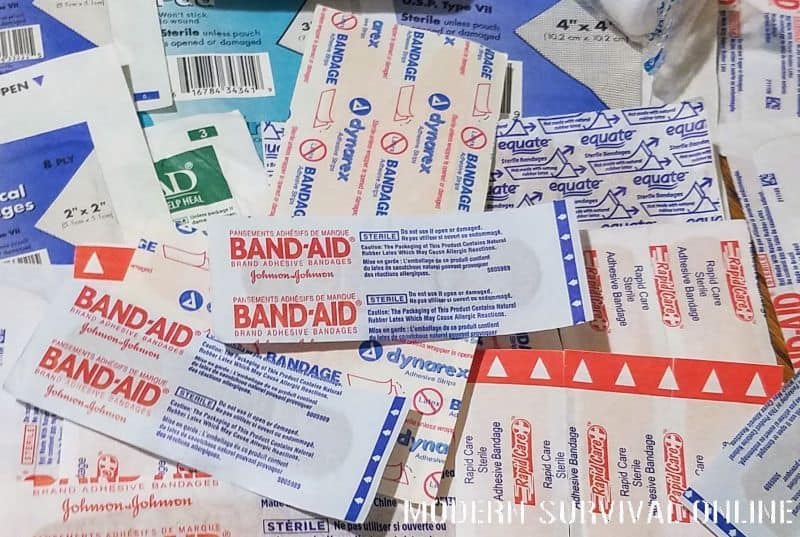
First-Aid Kit
One of the first tenets that any prepper learns on their quest to personal readiness is that you won’t be able to count on typical first responders during a disaster, and that includes doctors and EMTs.
This is not a slight to these people, but it is a cold observation of reality. They will be completely overwhelmed in the course of any disaster worth the name, and they might even be dealing with their own problems, having been caught up in the disasters effects themselves.
If you get hurt, it is up to you to take care of it. Considering that sources of injury will be in no short supply during any major disaster, FEMA recommends you keep a well-provisioned first aid kit in your home and handy at all times.
This first aid kit should contain at the minimum everything you need to treat basic injuries, including lacerations, minor punctures, minor burns, and sprains as well as fractures.
You’d be smart to include a significant supply of over-the-counter medications for all kinds of conditions, also. So long as you have the training, your first aid kit should include supplies for trauma treatment, also.
Prescription Medicine Supply
Buffing up your emergency stash of required prescription medicines is something that is easy to forget, and if you for any of your family members require prescription meds for the treatment or management of ongoing conditions and diseases you will rue the day it ever slipped your mind.
This is another one of those items that you can only depend on obtaining prior to the onset of a situation.
Talk to your family doctor, and explain to them what you want and why, and they should be able to provide you with a discretionary prescription that can help you lay in enough drugs for a short-term event, easily.
Keep in mind that medicines go bad over time, so you’ll need to rotate your supply.
Baby Food and Diapers
Babies are incredibly vulnerable in the best of times, and you’ll find they are only more dependent on you in the middle of a survival situation.
It’s for this reason that FEMA recommends you heavily stock up on baby formula, diapers and any other needed supplies well before the outbreak of any disaster, as these are among the first items to disappear from store shelves.
Consider diapers, formula, supplemental vitamins (if required), baby food and more mandatory. Some seasoned peppers prefer reusable diapers to reduce logistical strain and make their dollars go farther, but don’t worry about that right now as any soiled disposable diapers can just go out with the trash, which also helps cut back on water use.
Hygiene Kit
The vaguely romantic notion that you’ll be roughing it during a survival scenario without benefit of baths or showers is only vaguely romantic for a reason.
Attempt this, and in no time flat you will be intolerably smelly, and soon after that ripe for all sorts of skin ailments, sicknesses and other maladies.
You must make plans for keeping your hair, mouth and rest of your body clean, even during a crisis and that is why FEMA advises you have on hand a hygiene kit.
Note that this will be somewhat compressed compared to your usual bathroom routine that you enjoy every day. Soap, body powder, toothbrush, toothpaste and deodorant along with any needed feminine hygiene items are going to be mainstays of this kit.
Baby Wipes
Just because you might not have access to running water, or any other reliable source of water for that matter, during a disaster does not mean you won’t be able to take a bath. Bath, in this case, stands in for “some value of sponging off” and for quick touch-ups of the dirtiest and smelliest parts of your body baby wipes are tops.
Baby wipes are self-contained and include mild cleansers as well as a pleasant fragrance and are perfect for wiping down after you get dirty or just begin to stink.
So long as you keep their container closed and sealed they will also remain moist, meaning you won’t need to add any water, and that will stretch what water you do have even further.
Spare Clothing
Having spare clothing for every member of the family is a great idea when it comes to disaster preparedness, because as sure as the sun will set in the west you can count on the clothes you are wearing at the onset of the event coming hideously soiled, damaged or otherwise unusable.
Even if they aren’t, wearing the same set of clothes for days is only going to exacerbate hygiene concerns.
FEMA would tell you the same thing that I would tell you, specifically that you should keep at least one spare set of clothing on hand that is suitable both for helping to protect you from the environment you are in as well as any risky tasks you might have to undertake during this event.
Sturdy footwear, pants, shirts, gloves and headgear should all be included along with plenty of socks and underwear. Don’t forget your overgarments if you live in a particularly wet or cold environment.
Chlorine Bleach and Dropper or Pipette
Chlorine bleach is a survival item that is plainly excellent, and it has so many uses it is a wonder they don’t charge a fortune for it.
We use it every day when it is time to do a load of whites in the laundry, but it can do so much more for you, including sterilizing surfaces, reliably killing germs that might be lurking on your hands, and even purifying questionable water sources of any biological contaminants.
It is this final characteristic that makes it so precious for preppers, and FEMA agrees. You should keep on hand at least one gallon of unscented, non-thickened and otherwise undoctored, straight chlorine bleach, and also obtain a dropper or lab pipette that will allow you to precisely meter out controlled drops of the bleach.
It only takes a few drops to treat an entire gallon of water, but you must know your ratios and be accurate when administering it.
Dust Mask or Respirator
One potential threat many newbie preppers often forget about during disasters of all kinds is the likelihood of seriously contaminated air resulting from smoke, dust, etc.
Breathing in these contaminants will at the least potentially cause long-term health effects, and in the case of substantial air quality deterioration could even asphyxiate you.
An easy way to hedge your bets against this threat is to obtain high efficiency disposable dust masks, or purpose-made half face respirators with appropriate cartridges.
This is unofficially important prep for urban dwellers but everyone should make use of these devices for safety whenever called for.
Keep in mind that these items wear out, as dust masks themselves will become clogged, and useless and filter cartridges for respirators, they will eventually wear out with use, so have some spares on hand just in case.
Wrench, Pliers or Valve Key
FEMA advocates that all families have as part of their survival supplies a heavy duty set of wrenches, pliers or appropriate valve keys for shutting down water or gas mains in case a disaster results in damage that causes a leak.
Either can make a bad situation worse, and in the case of a gas leak create an extremely dangerous explosive atmosphere hazard.
When either becomes a problem in the immediate aftermath, you do not want to be scrambling looking for just the right tool that can turn off the appropriate valve. Make sure you have the tool handy in a dedicated place among your survival supplies and that it is previously tested for sureness.
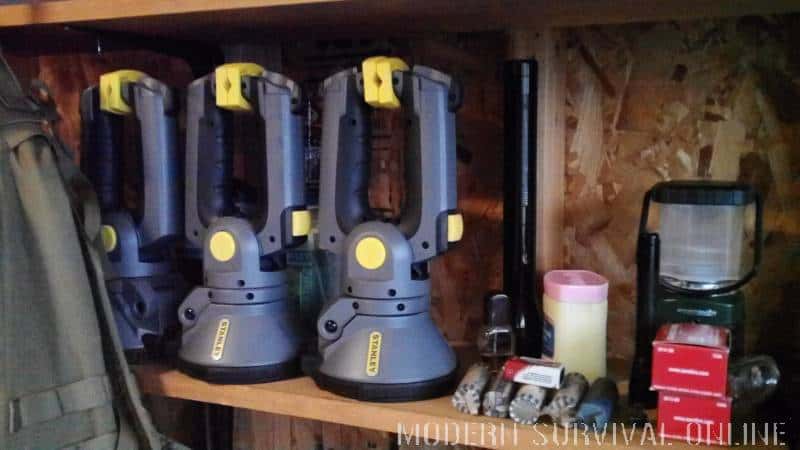
Flashlights with Spare Batteries
In almost all disaster situations you can depend on the power going out, and that means when the sun goes down you’ll be facing darkness the likes of which that most people in the developed world don’t encounter on a regular basis.
The darkness hides many dangers and will make taking care of the business of survival extremely challenging, and so accordingly you will need a personal lighting solution so that you may safely navigate and work even in periods of darkness.
Heck, even in the daytime the interiors of large buildings or basements might become oppressively dark.
No survival checklist is complete without a stash of flashlights and a healthy supply of spare batteries to feed them. Clever preppers will make sure that all of their flashlights use the same type of battery so they can share the same supply.
Whichever flashlights you choose, make sure you test them and inspect them periodically if you keep them loaded with batteries since they can corrode over time, ruining your tool.
Emergency Whistle
It is hard to overstate all the various bad outcomes that could result from a disaster, of any sort. Many natural disasters can potentially damage or even topple buildings, trapping you inside.
This could make signaling to potential rescuers extremely difficult if not impossible, and for that reason you need an emergency whistle capable of producing an ear-piercing blast, a blast capable of being heard over the din and noise of the aftermath.
But beyond that unhappy scenario, it does not take much imagination to think of a context or signaling to potential rescuers, family members or other people during times of low or occluded visibility could make the difference between a happy reunion and frustrated, anxiety inducing wondering.
Matches with Waterproof Container
You will not be able to count on modern methods of climate control still functioning in the aftermath of a deadly disaster. Electricity could be knocked out, gas mains broken or shut down and so forth.
The ability to produce fire on demand for heat, cooking and light is essential, and is a skill most humans have enjoyed since time immemorial.
However, the traditional skills of fire starting are becoming rarer and rarer all the time. Chances are you aren’t too swift at doing so, but even if you are there is no reason you should struggle to get a fire going when you can just strike a match.
FEMA has long advocated keeping a sizable quantity of sturdy matches in a waterproof, crush-proof container as part of your survival kit.
When starting a cooking or signal fire, lighting your fireplace, your grill, or your torch a match will do it with a flick of the wrist.
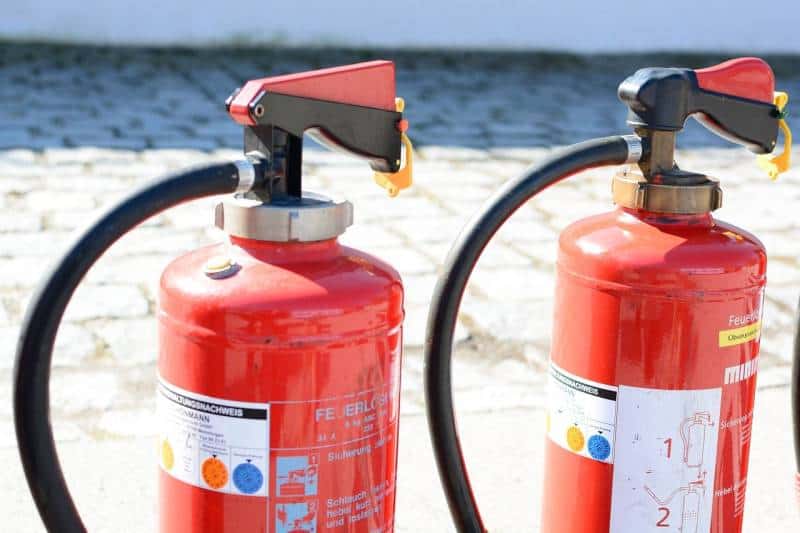
Fire Extinguisher
If a fire gets out of control, or your home catches fire, you’ll have precious little time to put it out before it turns into a fully involved blaze incapable of being stopped by your puny efforts. If this happens to you during a disaster scenario, your house is as good as gone, just one of many structures destined to be incinerated by the crisis.
Your first, and perhaps only, hope of putting such a fire out is with a proper, functioning fire extinguisher.
Only modern fire extinguishers have the reliability and effectiveness to completely snuff a fire of a given size before it gains strength and goes completely out of control.
You should choose a fire extinguisher that is ABC rated and intended for residential use, and be sure to get the largest one that you and your partner can effectively control. There is no such thing as too much fire fighting capability when the chips are down!
Pad and Pen or Pencil
There will be plenty of reasons to record important information during a disaster. Maybe you need to take a note, or leave one.
You might be writing down the location or address of an evacuation zone or supply drop. Perhaps you are writing down the locations of various hazards they have emerged as a result of the event.
Whatever the reason, you shouldn’t count on having your cell phone or some other electronic note-taking device handy. It could be lost, damaged or just out of power.
But paper will remember what the mind cannot, or will not, and for that reason a good, old fashioned analog tablet and pen or pencil should be included as a dedicated part of your survival kit, not something you have to go fishing for, potentially among the wreckage of what used to be your home.
Local and Regional Maps
Depending on what has occurred, you might emerge from your shelter to a landscape that looks entirely different compared to the last time you saw it, even a few short minutes or hours ago.
All sorts of disasters are powerful enough, and widespread enough, to reshape entire towns, obliterating buildings, signage and other landmarks that people rely on for navigation. This can be shockingly disorienting if you are unprepared for it.
But whether or not you have to deal with such a scenario, you’ll always be better off having local and regional maps for your area.
Even if the landscape has not been half-obliterated, you’ll be able to rely on paper maps to figure out where you are going and how you can get there safely should you need to evacuate. It is no wonder that FEMA strongly recommends every citizen include these as part of their survival complement.
Sleeping Bag
Believe it or not, across the widest possible variety of survival scenarios it is simple exposure that is the most consistent killer. Not dehydration, not starvation and not traumatic injury.
Exposure, particularly to cold, is capable of killing and as little as 3 hours if conditions are just right. You cannot afford to take the chance of being exposed to the elements, and unable to warm up should your shelter become compromised or otherwise uninhabitable.
FEMA advises us to obtain sleeping bags with full bedding sets for every member of our family or group, as this insures that people to stay warm, or at least warm enough, even if they do not have any other shelter, and a sleeping bag in conjunction with a shelter will typically keep you comfortable so long as your clothing is otherwise rated for the environment.
Cash or Traveler’s Checks
So many systems of modernity will fail us in the aftermath of a disaster, and among these many technological casualties will be the intricately complex and interconnected web of networks responsible for the functioning of credit and debit cards.
As the old saying goes, when the chips are down cash is king, and you must have a stash of cash, or at worst travelers checks, as part of your survival supplies in order to ensure you can still purchase what you need when you need it.
I have little doubt you probably come across many articles already advocating alternatives to typical paper currency, and some particularly smart cats will recommend stocking up on precious metals and other trade goods that will be genuinely valuable even when propped up paper money is only good for kindling.
That attitude has merit, but for our purposes, the vast majority of people will still deal in cash in the aftermath of a disaster since they know it is only a matter of time until the lights come back on and things go back to normal.

Survival Manual
If you are just starting out as a prepper, there is probably an awful lot you don’t know about the nuts and bolts of survival unless you came from a background and medicine, soldiering or law enforcement. Even that, very few people have all the answers, and are a total systems provider for their family.
To help you make good decisions and potentially shore up weaknesses in your personal database, you should obtain a comprehensive, easy to reference survival manual.
Depending on the type of book you get, these handy-dandy manuals can show you everything from indoor or outdoor shelter creation, purification of water, tending to common wounds and how to signal for help from rescuers who are on the ground, on the water or in the air. Invaluable reference texts, and a great way to start self-directed learning.
Emergency Alert Radio
One clever piece of gear you might not have thought of acquiring is an emergency alert radio, sometimes called a severe weather radio or NOAA radio.
These compact, energy efficient radios are designed to pick up special government disaster broadcasts on emergency notification frequencies, and the majority even have built-in hand cranked dynamos to ensure you can always power them up and receive instructions and additional information no matter the situation.
Radio communications are surprisingly robust and redundant compared to cell phone communication and bad situations, so you’ll want to obtain one of these for your stash as a backup to your cell phone.
Even better, many modern iterations of these radios feature other handy built-in survival technology, including flashlights, USB charging ports, emergency strobes and more. These are sort of a survival multi-tool among your preps!
Important Docs Package
Preparing to survive a disaster is one thing, as is preparing to endure the aftermath.
Sweeping away the rubble and picking up all the pieces of your former life is another thing entirely, and the wise prepper will follow FEMA’s advice for including a paper file or flash drive with electronic copies of all of the most important documents in your life, including social security cards, driver’s licenses, passports, deeds, titles, mortgages, diplomas and so forth.
Basically, anything that has an impact on the day today nuts and bolts of your life should be included in this file and weatherproofed.
For a paper file, that means lamination and then inclusion in a sturdy binder or portfolio. A flash drive is fine so long as you take care to insert it in a waterproof, crush proof container that you will not misplace.
Whatever option you choose keeping this vital prep secure is paramount, as a thief will have the literal keys to your life should they obtain it. Conceal or otherwise hide a paper version, and password encrypt an electronic version.
Conclusion
You might say that the Federal Emergency Management Agency knows a thing or two about getting civilians ready and able to survive and sustain in the aftermath of disasters of all kinds.
After all, it is in their name! If you are new to prepping you can rejoice that they have done all the leg work for you when it comes to assembling your basic survival kit, and even if you are a little farther along on your prepping journey, you shouldn’t ignore what they have to say because the contents included here form an excellent basis for any hardcore prepper’s survival stash.
